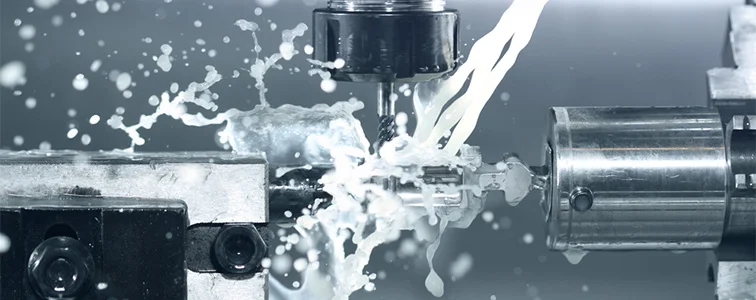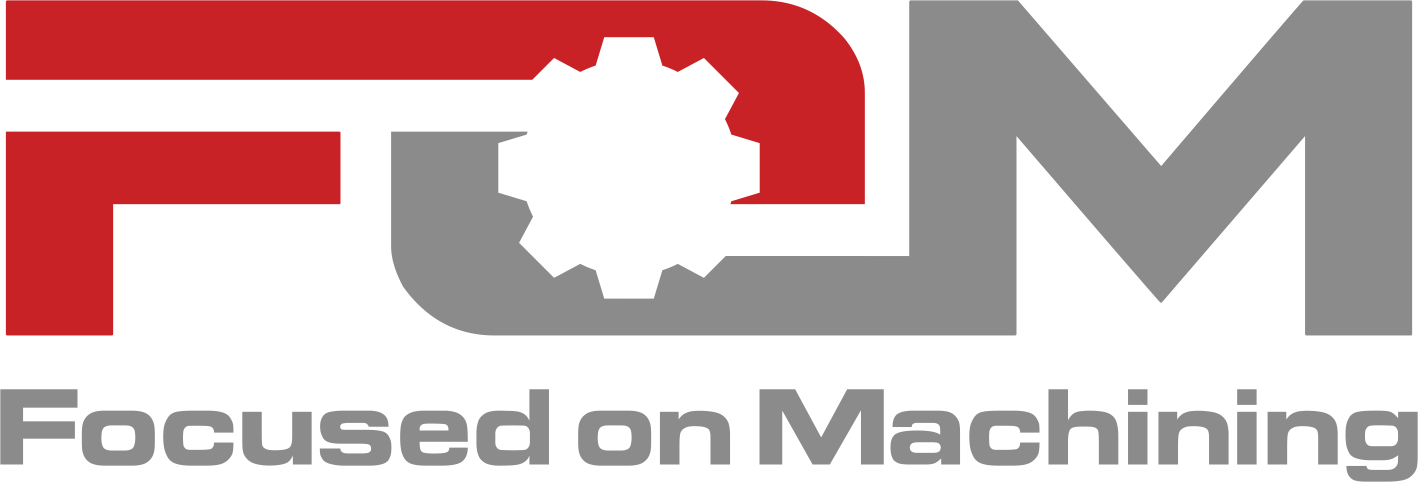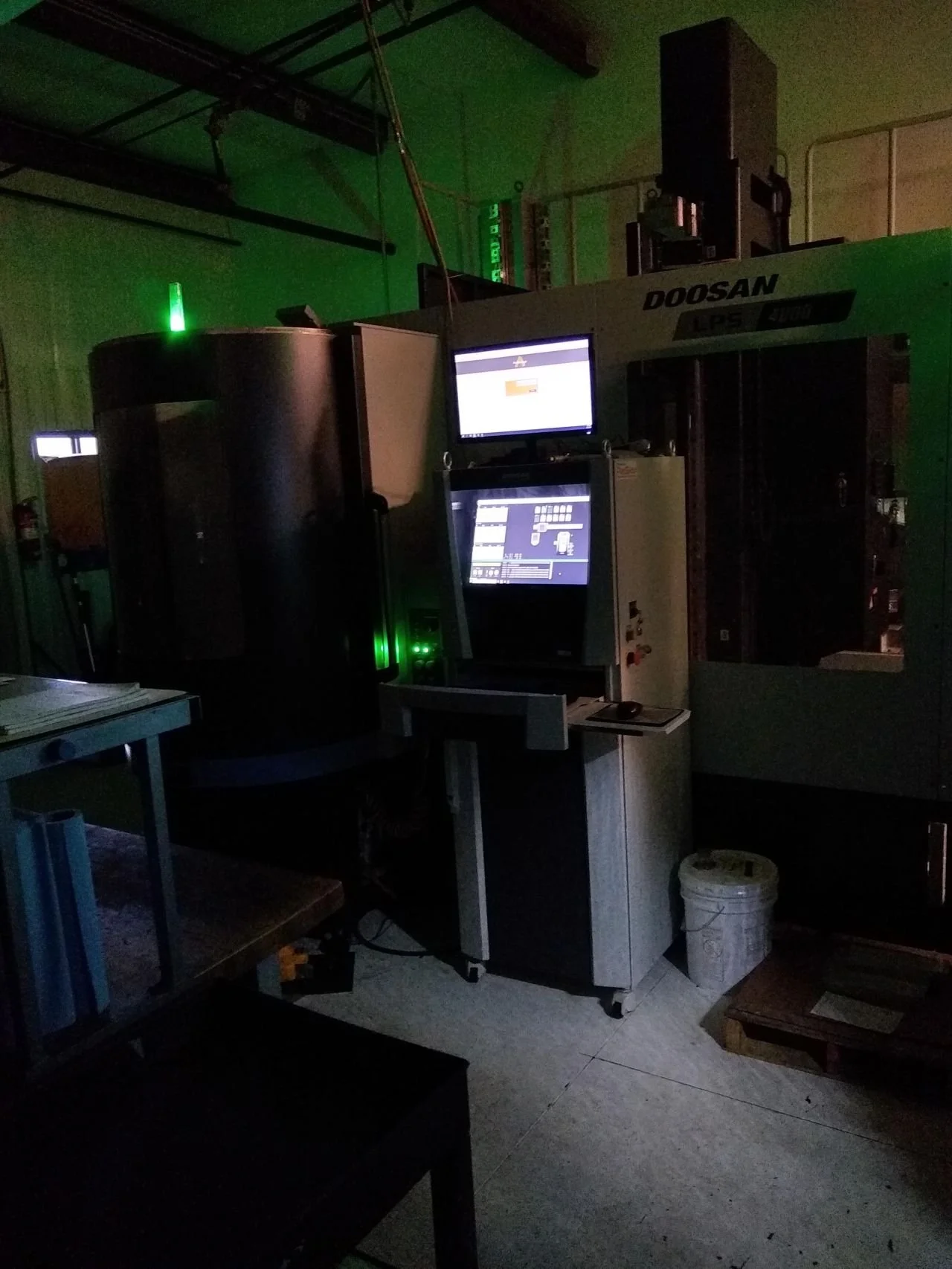
BLOG
Focused on Machining Is a Service-Disabled Veteran-Owned Small Business
If you’re looking for manufacturing partners who can help you meet FAR requirements, I hope you’ll consider Focused on Machining for CNC machining services. We have a reputation for machining complex parts fast and at an incredibly high quality level
By Justin Quinn, President of Focused on Machining
If you’re a manufacturing buyer who does business with the US government, chances are you’re well-acquainted with FAR regulation 19.201. This regulation clarifies the government’s commitment to providing business opportunities to small businesses, veteran-owned small businesses, service-disabled veteran-owned small businesses, HUBZone small businesses, small disadvantaged businesses, and women-owned small businesses.
From my discussions with buyers, I understand that adhering to the highly specific regulations outlining the percentage of government work that must be contracted to businesses in the categories listed can be difficult. Yet the stakes couldn’t be higher, as failure to comply could cost you your next government contract.
That’s why I want you to know that when you contract CNC machining services to Focused on Machining, you’ll be working with a certified Service-Disabled Veteran-Owned Small Business (SDVOSB).
My Experience in the US Air Force
Many people don’t know this, but I served in the US Air Force for six years before purchasing Focused on Machining. I’m always happy to look back and reflect on that foundational experience.
I joined the Air Force right out of high school in 2002 and spent my first couple of years learning and becoming certified in aircraft systems—everything from engine to hydraulic to air conditioning—to serve as an aircraft mechanic on the C-17.
I then earned my flight status, allowing me to fly with the aircraft all around the world. For years, I lived out of a suitcase, traveling to locations like Afghanistan, Iraq, and Antarctica with a toolbox and a laptop to ensure the aircraft remained operational. It was an incredible way to spend that part of my life, and I’m very grateful for the experience.
Unfortunately, all that time spent in close proximity to jet engines led to cumulative hearing loss, which is how I earned my disabled veteran status. I maintain an up-to-date certification from the VA stating that I am a disabled veteran.
CNC Machining Services Certifications
I understand that many buyers who do business with the US government must outsource their manufacturing to shops that hold specific certifications. As a precision machine shop with a high percentage of aerospace and defense customers, Focused on Machining is committed to maintaining pertinent certifications and compliances.
ISO certification
ISO certification ensures that we maintain a quality management system conforming to a set of requirements defined by International Standards.
AS9100 certification
If you need an AS9100 machine shop for aerospace parts, you’ve come to the right place. Focused on Machining follows a strict set of quality management system requirements designed specifically for the high-stakes aerospace industry.
ITAR compliant
We use ITAR-compliant systems and processes to ensure adherence to US government regulations regarding the import and export of defense-related items.
CMMC compliant (in progress)
We are in the process of pursuing CMMC compliance and are on target to achieve Level 2 certification, which has a long list of 110 requirements aligned to NIST SP 800-171, by the end of 2024.
Work with Our Service-Disabled Veteran-Owned Small Business
If you’re looking for manufacturing partners who can help you meet FAR requirements, I hope you’ll consider Focused on Machining for CNC machining services. We have a reputation for machining complex parts fast and at an incredibly high quality level. Let us know what we can do for you.
How Customers Benefit from Our Lights-Out Manufacturing Capabilities
Focused on Machining offers lights-out machining as part of our CNC production machining services. These capabilities allow us to run orders around the clock so we can provide faster lead times, lower costs, and better flexibility.
Focused on Machining offers lights-out machining as part of our CNC production machining services. These capabilities allow us to run orders around the clock so we can provide faster lead times, lower costs, and better flexibility.
We currently have significant capacity on our DN Solutions NHP 4000, a horizontal lights-out machining center equipped with a 275-tool matrix and 12-station linear pallet system. Keep reading to find out how this machine benefits customers and if your part is a good candidate for it.
Benefits of Our Horizontal Lights-Out Machining Center
The NHP 4000 is essentially a horizontal machining center attached to a 12-pallet system. There are 12 tombstones in the pallet pool, and each tombstone has four sides, giving us 48 machining tables in just one machine. Once loaded and programmed, the NHP 4000 will run unattended until it runs out of work.
Here are the top three benefits customers can expect:
1. Cost-effectiveness
Labor factors significantly into the cost of machined parts. Generally, the more labor required, the higher the price. Because the NHP 4000 is highly automated, labor is only necessary during the initial programming and setup and when it’s time to change out a part and add raw stock. This benefit lets us keep our internal costs low and pass savings on to customers.
Ultimately, you get work done on one of the most advanced and expensive machines in our CNC production machining services department for a highly competitive rate.
2. Just-in-time inventory
The NHP 4000 is ideal for long-term contracts involving repeat parts machined and delivered at planned intervals over a fixed period of time. Once the parts have been programmed, we can run them with the click of a button, allowing us to machine them as close to the delivery date as possible without having to hold inventory on our shelves.
Have a revision change? Just let us know, and we’ll update the programming before your next delivery.
3. Flexibility
The ability to run parts with the click of a button gives us the flexibility to accommodate schedule changes and last-minute requests for repeat parts.
Need a short run of parts we’ve already programmed? We can get you what you need right away without charging you expedite fees.
Is Your Part Right for Our Horizontal Lights-Out Machining Center?
The NHP 4000 allows us to quote highly competitive prices for complex parts, but there are some caveats. Generally, parts should check these boxes:
High-volume or repeat. The initial programming and setup costs must be spread across a high enough volume of parts for the cost per part to be competitive. A good way to think of it is the longer the repeatability period, the higher the volume. For instance, if you only need one order annually, the volume should be in the hundreds; if you need monthly orders over an annual period, as few as five parts per month is tenable.
Moderately complex. Regarding part complexity, the sweet spot for this machine is a moderately complex part with numerous features and/or features on all sides that do not require 5-axis machining services.
Aluminum. Because aluminum is easy to cut and causes minimal tool wear, running aluminum parts unattended is relatively low risk. A harder material like stainless steel presents more opportunities for error.
If your part doesn’t check all these boxes, it’s still worth having a conversation to determine whether the NHP 4000 could be the right fit. As of June 2024, we have 8,000 hours of open machining capacity for it that we are eager to fill with your parts!
Details Matter When Machining Repeat Parts
When you order repeat parts from a CNC machine shop, you can’t be fully confident the parts will be consistent from one order to the next until you understand the shop’s approach to documentation. At Focused on Machining, we have a fully digitized solution that allows us to offer unbeatable consistency and efficiency when it comes to repeat orders. Like many of our other solutions to manufacturing challenges, it all ties back to our ERP system.
When you order repeat parts from a CNC machine shop, you can’t be fully confident the parts will be consistent from one order to the next until you understand the shop’s approach to documentation.
Is the shop using file folders to store physical copies of blueprints with hand-scribbled notes? That’s not exactly an ideal system. Scanning the blueprints into a digital database? That’s a slightly better way to do it, but even so, it’s not scalable.
At Focused on Machining, we have a fully digitized solution that allows us to offer unbeatable consistency and efficiency when it comes to repeat orders. Like many of our other solutions to manufacturing challenges, it all ties back to our ERP system.
Determining the Level of Detail Required
Any time our Colorado CNC machine shop receives a work order in our ProShop ERP system, one of our team members selects a work order type. The work order type helps us determine the level of detail required when documenting information about the part.
Prototypes require the lowest level of documentation because, in most cases, we’re making a single part to get out the door to the customer as quickly as possible. These parts typically don’t return to us, so minimal documentation is sufficient. (If we know we’ll be transitioning from prototype to production, we’ll document information in greater detail.)
Pre-production indicates that this is our first time making a part we know will become a repeat part, so a specific level of documentation is required.
1st run/new rev tells us it’s a part we’ve made before that has recently undergone a revision change. It suggests we should use as much of the existing documentation as possible and update any procedures that have changed.
Repeat production indicates we’ve made the part before, will make the part again, and should add images with clear descriptions outlining the process in detail.
Documenting the Machining Process for Repeat Parts
Regarding repeat parts, the goal is to provide highly detailed instructions so that any machinist has the necessary information to make an identical part.
The written description contains the most basic information and is often a one-line sentence. The run description contains images and instructions on how to set up the machine. As you can see, the level of detail is high.
Step 1: Set chuck pressure to 8KG/CM2
Step 2: Set tool 1 sticking out between 7.2 and 7.4 inches
Step 3: (Tool 1 in pocket 1) Make sure coolant flow hits each tool being used
Step 4: (Tools 4 & 5 in pockets 4 & 5)
… and so on until the last step.
The joke at our Colorado CNC machine shop is that the run description should be so detailed that even the owner of the company, who is NOT a machinist, could set up the machines.
Adding special notes
Our machinists often add special notes that are important for the next machinists to see. For instance, if they’re working on a part with a tight tolerance that must be hard anodized, they’ll note that the part must be machined to a specific tolerance pre-plating to account for anodize buildup.
Details Matter in Precision Machining
Using our ERP to document information not only allows us to deliver consistent parts with incredible efficiency but also reinforces to our team that details matter in precision machining. This mentality is a significant aspect of what sets our Colorado CNC machine shop apart.
How Our Precision Machine Shop’s ERP System Streamlines Complex Assemblies
Building complex assemblies requires more than having the right capabilities and expertise on the precision machine shop floor. It’s just as important to have the right software working behind the scenes to facilitate the process.
Building complex assemblies requires more than having the right capabilities and expertise on the precision machine shop floor. It’s just as important to have the right software working behind the scenes to facilitate the process.
We recently wrote about how our advanced digital quoting software allows us to quickly turn around detailed and accurate quotes for complex assemblies. Now, let’s shift the focus to how we streamline the manufacturing of complex assemblies once we have a job. The secret is our ERP system, ProShop.
Controlling and Managing the BOM
The key to executing complex assemblies is controlling and managing the bill of materials (BOM). You may recall that our quoting software breaks up the assembly into three categories: manufactured components, purchased components, and subassemblies. Our ERP system does the same thing.
The BOM pictured shows that items 1-7 are individual parts. Then, there are corner wheel, lockout plate, pin block, and pivot plate subassemblies. The system will take each subassembly and break it up into its own more granular BOM.
Determining Purchasing Requirements
The ERP system will help us determine our purchasing requirements using the information from the BOM. For each purchased component, it will tell us a) the quantity we have in stock, b) the quantity we have on order, and c) the quantity already allocated to different work orders to come up with the precise quantity we need to purchase.
Creating Work Orders
The system will then create work orders for each manufactured component and subassembly in the assembly. The work order pictured depicts an aluminum 6061-T6 plate that needs to be hard anodized. No hardware is required because we aren’t yet at that point in the assembly.
When we have completed all 42 of these parts, we provide a final inspection, ship them to inventory, and move on to the next work order.
Maintaining Material Certifications
As any aerospace manufacturer is well aware, maintaining material certifications is critical. It’s hard to imagine how difficult that would be for a complex assembly without our ERP system.
However, fortunately, with the click of a few buttons, we can generate a list of the material certifications for every piece in the assembly—whether purchased or machined components. Pictured is an excerpt of a list that is probably hundreds of pages long.
Staying Organized to Keep Lead Times Short
While entering the information for a complex assembly into our ERP system can take a few hours, the upfront investment of time is well worth the effort.
Manufacturing a complex assembly requires an extremely high level of organization. When precision machine shops are disorganized, the process doesn’t run smoothly, and lead times tend to be long as a result. Our ERP system helps us stay organized from beginning to end so that we can complete and deliver complex assemblies quickly.
If you’re looking for a precision machine shop that won’t no-quote your complex assembly, bring it to Focused on Machining. We’ve got the right systems in place to confidently take on your project. Request a quote today!
To Succeed in Manufacturing, Learn to Thrive in Uncertainty
Running a precision machine shop during an industry-wide labor shortage, a global pandemic, unprecedented supply chain disruptions, and some of the most contentious presidential election cycles in history has certainly been one of the most interesting challenges of my life.
Running a precision machine shop during an industry-wide labor shortage, a global pandemic, unprecedented supply chain disruptions, and some of the most contentious presidential election cycles in history has certainly been one of the most interesting challenges of my life.
With another presidential election year underway, many CNC machine shops, including mine, are experiencing a period of decreased business as markets like aerospace and defense slow down spending while awaiting the election’s outcome.
In full transparency, Focused on Machining recently experienced three of the worst quarters on record. I don’t mind putting that in writing for all to see. Why? Because I’m confident we’ll persevere and that things will improve with time.
Focused on Machining has weathered plenty of storms and proven repeatedly that we come out better and stronger on the other side.
2018: Material Tariffs Lead to Pricing Volatility
When I took over as president of Focused on Machining on October 26, 2016, America was two weeks away from Donald Trump becoming president. It was a surprising outcome that most of us in manufacturing thought would positively impact our industry.
However, in 2018, President Trump announced that he would impose tariffs on steel and aluminum. Whereas previously, we could take POs without re-quoting projects, suddenly, we had to re-quote nearly every project due to material pricing volatility.
Instead of letting this obstacle get in our way, we began to identify and share material sourcing best practices with customers—best practices that would prove valuable amid the supply chain disruptions that would occur in the coming years. Additionally, I worked closely with the team at Paperless Parts to help them implement real-time pricing to automate the material quoting process.
2020: COVID-19 Pandemic Impacts the Global Economy
In March 2020, COVID-19 brought the world to a halt. Like everyone else in our industry, we wondered how it would impact manufacturing. I recall going through about six weeks of extreme uncertainty, fearing that a lack of business would lead me to inevitable layoffs.
Instead, the opposite happened: my business grew. As a CNC machine shop specializing in medical machining, we began quoting parts for 3D printed face shields, ventilators, and other equipment suddenly in high demand.
We then went on to experience our biggest growth period in history—right in the middle of the pandemic. While many shops did have to resort to layoffs, Focused on Machining found a niche with customers whose industries were booming during a time when people were spending a lot of their time at home: cannabis and beer canning.
2023-2024: Presidential Election Year Slows Business in Critical Markets
Recently, we’ve felt the impact as business has temporarily slowed in markets like aerospace and defense in anticipation of the 2024 presidential election. However, our efforts in the past decade have positioned us to continue thriving.
Here are just some of the reasons I know Focused on Machining is here to stay:
Continuous sales and marketing efforts help us stay top of mind for customers
Diversification across industries ensures we can navigate market highs and lows
Certifications like AS9100, ITAR, and ISO 9001:2016 allow us to cast a wide net
Willingness to take on complex projects means we manufacture parts and build assemblies other shops won’t
Fast quoting and on-time delivery build our reputation as a world-class shop, which helps us secure high-profile customers
I’m proud of how far Focused on Machining has come and excited to see where we go in the decades ahead. No matter what, I’m confident we can overcome any challenges in our way—we’ve already done that time and again, and the results speak for themselves.
How Our CNC Machine Shop Quotes Complex Assemblies Quickly and Accurately
Customers are often shocked at how quickly our CNC machine shop can turn around an impressively detailed and accurate quote for a complex assembly. Our secret? Our advanced digital quoting software. If you’re wondering what goes on behind the scenes, here’s a peek behind the curtain.
Customers are often shocked at how quickly our CNC machine shop can turn around an impressively detailed and accurate quote for a complex assembly. Our secret? Our advanced digital quoting software. If you’re wondering what goes on behind the scenes, here’s a peek behind the curtain.
Quoting a Complex Assembly
First, you’ll want to send us your full assembly file, which we’ll take and upload into our Paperless Parts quoting platform. From there, the software will automatically break up the assembly into three distinct categories—manufactured components, purchased components, and subassemblies—to provide an accurate quote.
Manufactured components
The platform will identify the components we’ll need to manufacture in our CNC machine shop and provide an estimate based on factors such as material cost, machine time, and plating.
Purchased components
Coordinating the ordering of the purchased components for a complex assembly can be challenging, especially for assemblies requiring dozens of unique components. Thankfully, Paperless Parts makes this task very simple.
All new components purchased for the first time are added to the system with the part number, description, piece price, and box price. The system automatically assigns the price based on the quantity of components needed.
Subassemblies
Complex assemblies typically involve multiple subassemblies. The software will break out the subassemblies, allowing us to determine which manufactured and purchased components go into which subassemblies and the amount of labor required.
Visual Example: Quoting a Modular Wi-Fi and 5G Signal System Assembly
A customer recently came to us with a complex assembly prototype that needed to be redesigned for added strength and durability. A couple of years ago, we would have no-quoted this customer outright because it would have taken too much time and effort just to quote the project. However, with Paperless Parts, we could provide a quote within just one day.
Looking at the BOM, you can see that many components are involved in this assembly.
But, here, Paperless Parts breaks everything down by subassemblies, manufactured components, and purchased components.
The information is broken down even further when we click on each subassembly.
Next Up: What Happens After Quoting
Of course, quoting a complex assembly is only the first step. Then comes the actual manufacturing. Fortunately, our advanced software streamlines the process from beginning to end.
Next month, we’ll dive deeper into what happens after quoting a complex assembly. Be sure to follow us on LinkedIn so you don’t miss the article. Ready to get your project started? Request a quote!























